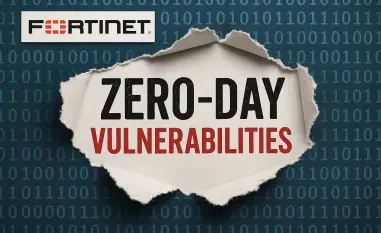The rapid advancement of artificial intelligence (AI) technologies has brought about significant benefits for organizations, enhancing productivity, data analysis, and innovation. However, alongside these benefits comes a rising security threat known as Shadow AI, which has the potential to undermine organizational safeguards. Shadow AI refers to the unsanctioned use of AI tools and technologies by employees within organizations, often bypassing formal IT approval and established security protocols. As organizations struggle to adapt to the swift pace of technological innovation, the specter of Shadow AI poses critical risks that need to be addressed. This article delves into the causes, risks, and strategic approaches to combating the growing security threat of Shadow AI.
Defining Shadow AI and Identifying Its Causes
Shadow AI is driven by several interrelated factors, including the relentless pressure to stay competitive, a lack of awareness among employees, and the rapid pace of AI technological evolution. Employees often seek to leverage AI tools independently to gain strategic advantages in their daily tasks. These motivations, while understandable, lead to the unauthorized implementation of AI solutions, creating vulnerabilities that many organizations are ill-prepared to manage. The complexity of keeping pace with these advancements means that agency leaders and governance structures often struggle to enforce necessary oversight.
In many cases, the pressure to remain competitive is a primary driver of Shadow AI. Teams may independently adopt AI tools with the intent to boost productivity, improve data analysis, or drive innovation, all without formal approval from the IT department. Additionally, employees frequently lack awareness of security protocols or the potential vulnerabilities inherent in unsanctioned AI tools. This lack of oversight can result in significant security lapses. The rapid evolution of AI technology further compounds the issue, as many security norms and standards are still underdeveloped, making it difficult for organizations to maintain a secure environment.
Unique Security Challenges Posed by Shadow AI
The rapid evolution of AI presents unique and complex security challenges that differ significantly from those associated with more established technologies such as cloud security. Unlike cloud security, which has well-established norms and standards, AI is in a state of constant flux. This ongoing evolution introduces uncertainties regarding vulnerabilities and risks, as the emerging nature of AI technologies lacks a comprehensive understanding of potential threats. It is this dynamic environment that makes managing the security risks associated with Shadow AI particularly challenging.
Adding to the complexity is the fact that the unsanctioned use of AI often goes unnoticed by agency leaders and security teams. The novelty and complexity of AI technologies mean that shadow AI utilization can escape the scrutiny of top leadership, who are frequently preoccupied with more traditional organizational challenges. Mitch Herckis of Wiz points out that awareness of Shadow AI as a significant issue has yet to permeate the C-suite, leaving organizations vulnerable to security risks and inefficiencies that can have far-reaching impacts on their security posture.
Risks and Costs Associated with Shadow AI
When employees use unapproved AI tools, they bypass the vetting processes typically managed by IT and procurement teams. This lack of oversight leads to significant security risks and inefficiencies. For example, unsupported AI tools may not meet security and compliance standards, increasing vulnerabilities within the organization and exposing sensitive information to potential breaches and leaks. The consequences of these lapses can be severe, including increased vulnerabilities, data breaches, and operational inefficiencies, all resulting from the deployment of unsanctioned AI tools.
The use of disparate AI solutions independently by various teams can also result in increased licensing fees, higher support costs, and inconsistent outputs, leading to inefficiencies and waste. Furthermore, adversaries are increasingly targeting AI models and data, escalating the risk of cyber incidents. Shadow AI can, consequently, accelerate these risks, making it imperative for organizations to proactively address the growing threat. It is crucial to establish robust strategies to detect and mitigate the use of unauthorized AI tools to safeguard organizational integrity and security.
Combatting the Shadow AI Threat
To effectively manage the Shadow AI threat, security teams can adopt strategies akin to those used to deal with shadow IT. One critical step involves conducting a comprehensive technical inventory of all AI tools and models within the organization. This can be facilitated by automated AI security posture management tools, such as Wiz’s AI-SPM, which assist in identifying and cataloging AI assets. Having a detailed inventory ensures that organizations are aware of the AI technologies in use, thereby enabling them to implement security measures and oversight effectively.
Once the inventory is complete, it is essential to establish appropriate permissions and segregate sensitive data to mitigate unauthorized access and potential vulnerabilities. Automated solutions like CrowdStrike Falcon Cloud Security AI-SPM play a vital role in managing AI security posture in real-time by detecting threats, managing vulnerabilities, and enforcing policies. As underscored by CrowdStrike’s recent survey, the integration of safety and privacy controls is crucial for maximizing the potential benefits of generative AI while ensuring robust security. These steps, if implemented diligently, can significantly enhance an organization’s ability to combat the risks associated with Shadow AI.
Establishing Policies and Understanding Use Cases
Establishing robust policies and governance frameworks is crucial for effectively managing AI usage within organizations. Agencies should craft comprehensive AI policies that outline clear guidelines for AI adoption and use, ensuring that these policies incorporate risk-based approaches as advised by the agency’s legal department. Effective communication of these policies throughout the organization is equally important to ensure that all employees understand and adhere to the established guidelines. This comprehensive approach helps create a cohesive and secure environment for AI utilization.
Key components of an effective AI policy include risk-based guidelines, access controls, and the formation of AI steering committees. These committees can play a critical role in helping leaders understand AI use cases, addressing employees’ needs and concerns, and ensuring a balanced approach to AI adoption and security. By bringing together diverse perspectives and expertise, AI steering committees can foster a collaborative environment where risks are identified and mitigated, and the full potential of AI technologies can be realized within a secure framework.
Maintaining a Balanced Perspective on AI
The rapid advancement of artificial intelligence (AI) technologies has significantly benefited organizations by boosting productivity, enhancing data analysis, and fostering innovation. Despite these advantages, a growing security threat known as Shadow AI poses substantial risks. Shadow AI refers to the unauthorized use of AI tools and technologies by employees within organizations, often sidestepping formal IT approvals and established security measures. As organizations strive to keep up with the relentless pace of technological progress, the dangers of Shadow AI become increasingly pressing. It undermines organizational safeguards and opens up critical vulnerabilities that need urgent attention. This article explores the root causes of Shadow AI, the risks it entails, and strategic measures that can be implemented to combat this escalating security threat. Understanding and addressing these issues is vital for organizations to safeguard their data integrity and maintain robust security protocols in an ever-evolving technological landscape.













